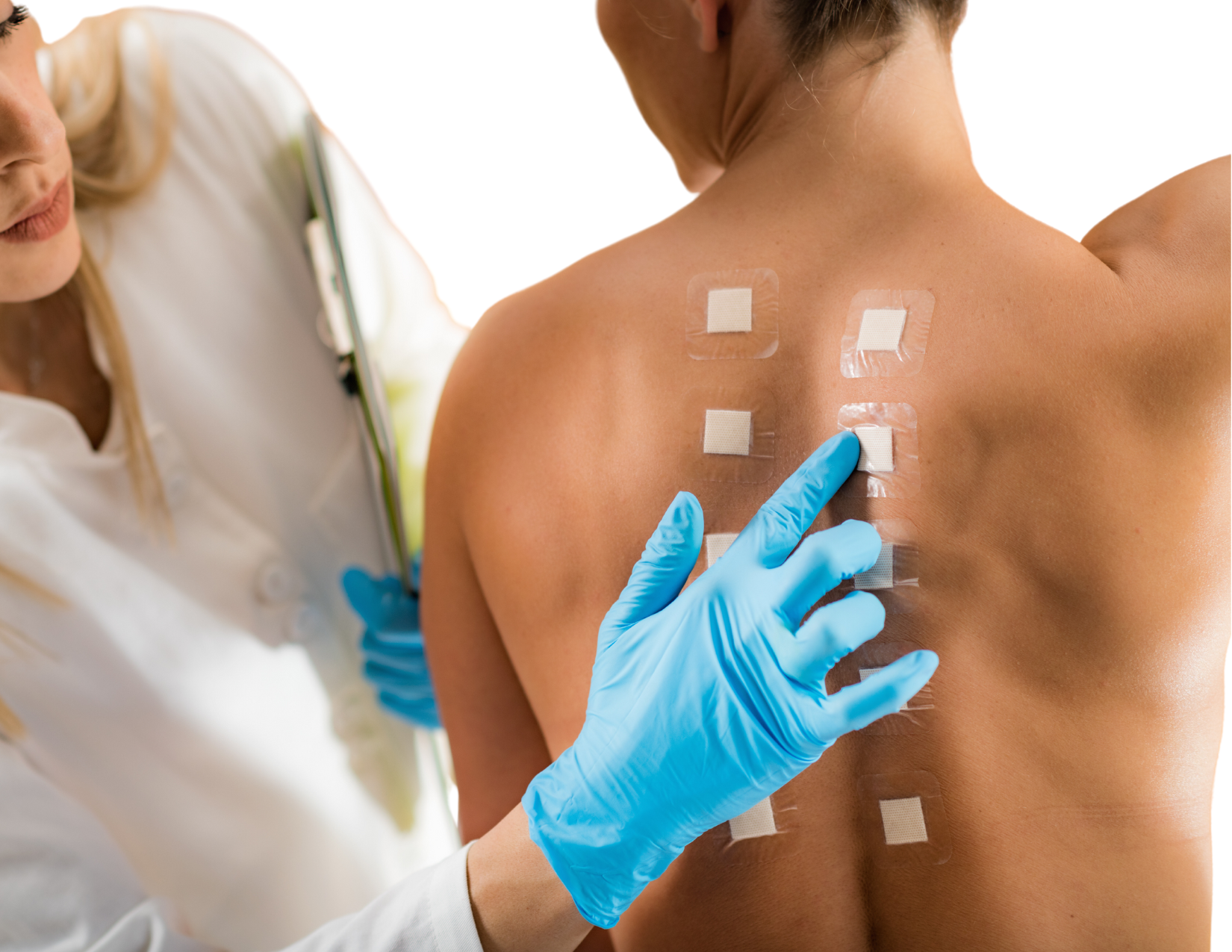ALLERGY PATCH TESTING
Home > Procedures > Cluster Desensitization
Unlock the Mystery of Allergies
Discover Answers with Allergy Patch Testing!
During a skin patch test, an allergist places a small amount of an allergenic substance on your skin, typically on your back or arm, and leaves it there for a certain period. This procedure potentially causes a reaction. The main goal of allergy testing with back patches is to determine whether you have any allergies or sensitivities to specific substances.
It's worth noting that the allergy patch test identifies delayed-type hypersensitivity reactions that occur when allergens make direct contact with the skin. However, it's essential to understand that this diagnostic procedure does not predict or diagnose allergies related to inhaled substances or severe anaphylactic reactions caused by foods, insect stings, or other systemic triggers.

Patch Testing: Essential Pre-Appointment Information
If you have been experiencing a persistent rash or skin irritation, your doctor may advise you to undergo a skin patch test to identify potential allergens causing the reaction. Skin patch testing is a valuable diagnostic tool that helps identify allergies that manifest as delayed skin reactions.
It is essential to be well-prepared and informed before undergoing patch skin testing for allergies. This guide provides valuable insights into the procedure and its purpose and highlights the significance of having adequate knowledge.
By preparing adequately, understanding the procedure, and communicating effectively with your healthcare provider, you can maximize the benefits of patch testing and gain valuable insights into
managing your allergies more effectively. Take control of your health and get the answers you need with skin patch testing.
PLEASE NOTE: YOU MUST AVOID ORAL STEROIDS FOR 4 WEEKS Before PATCH TEST
-
How is the patch test performed?
To carry out a patch test, your doctor places allergenic patches on your back during a visit to their office. You must return after 48 hours for the initial assessment and patch removal. Physicians schedule a follow-up assessment for 3–5 days after the initial application of the test.
It is vital to keep the test site clean and dry, and you may need to shave the area before the patch placement. We recommend avoiding sunburn and steroid creams on your back before the patch test, as they could potentially interfere with the results.
-
What is the purpose of patch testing?
The purpose of a patch test is to pinpoint the specific substances that might be causing allergic contact dermatitis or other forms of skin allergies. These allergies typically manifest as localized skin reactions such as redness, itching, swelling, or small blisters at the contact site.
By identifying the specific triggers, healthcare providers develop an effective treatment plan to help you avoid those substances and manage your symptoms.
-
What is the difference between patch testing and allergy testing?
Unlike the typical allergy skin tests that focus on inhaled substances like pollen, mold, and animal dander, patch testing is ideal for detecting allergies caused by direct skin contact with various compounds.
-
What is allergic contact dermatitis?
Allergic contact dermatitis is a severe skin condition triggered by common substances containing allergenic ingredients. Exposure to these substances can cause unpleasant symptoms such as itching, cracking, redness, soreness, and even bleeding. The culprits behind this condition include personal care products, clothing, and other everyday items such as cleaning supplies, paper and ink, medicines, disinfectants, construction materials, and rubber products.
To effectively manage and prevent future reactions, it is crucial to identify the specific substances that trigger your skin allergies. Allergy patch testing is a valuable tool that can help you pinpoint the exact allergens responsible for your symptoms. Don't let allergic contact dermatitis take control of your life – take action today to protect your skin and prevent future reactions.

